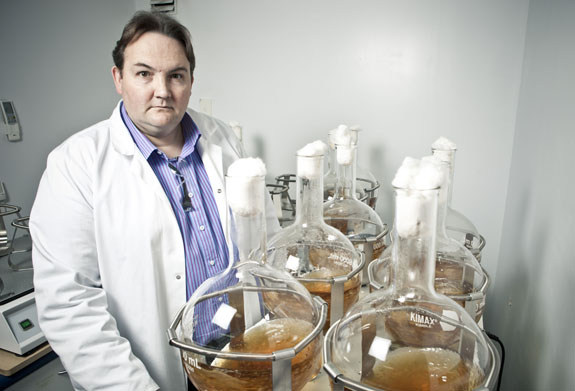Should you worry about Bisphenol-A?
Bisphenol-A has been the subject of consumer outcry in the US and Canada. The scare stories keep coming: it’s said to cause cancer, infertility, miscarriage. But is there really anything to worry about?
Where is it?
Bisphenol-A (BPA) is used in the production of polycarbonate plastic.
Clear, hard and shatterproof, polycarbonate plastic is ideal for baby and water bottles, medical and dental purposes, CDs, DVDs and electronics. As an epoxy resin, polycarbonate coating is used on the inside of almost all food and drink cans.
Plastic bottles marked with recycling number 7 may be polycarbonate. Number 7 is a catch-all for plastics that aren’t numbers 1 to 6, including bioplastics. Unless the letters ‘PC’ are printed next to the number, you won’t know for sure whether plastic 7 is made with BPA. If the plastic’s soft, it’s probably not. If it’s hard, almost like glass, it’s probably polycarbonate.
What’s the problem?
BPA doesn’t stay locked in polycarbonate plastic. It migrates into food or drink that has been in contact with materials containing BPA. What happens once we ingest it is a subject of considerable debate.
The arguments against
In the ‘be afraid’ corner, BPA has been linked to: changes in mammary and prostate tissues that lead to cancer; accelerated puberty; increased risk of miscarriage; foetal developmental delay; increased formation and growth of fat cells. It’s also been accused of mimicking the potent female hormone estradiol, increasing the risk of diabetes, cancer and obesity.

The British Journal of Pharmacology has reported that BPA affects the transport of glucose in the body, thereby contributing to diabetes and obesity. It’s also been reported that adults with high levels of BPA in their urine were more likely to have heart disease, diabetes and liver enzyme abnormalities.
Studies by Yale University School of Medicine and Guelph University found that even low doses of BPA slow the synapses in the brain, possibly leading to memory loss, learning difficulties and depression. The US National Toxicology Program has expressed “some concern” that BPA could adversely affect brain development and behaviour in foetuses, infants and children.
The arguments for
Meanwhile, in the ‘don’t fret’ corner, the European Food Safety Authority has concluded that people’s dietary exposure to BPA (including children’s) is well below the “tolerable daily intake”, and that tests on lab rats were invalid because they metabolise BPA differently to humans.
The American Chemistry Council has stated it has no serious concerns about the effect of BPA on human reproduction and development. The US Food and Drug Administration has also concluded that there is an “adequate margin of safety” for BPA at current levels of exposure.
Food Standards Australia New Zealand has assessed the risk to infants and concluded that BPA doesn’t pose a significant health threat; the New Zealand Food Safety Authority agrees.
Why is it used?
There isn’t really any reason to use BPA. Research chemist Doug Cleverly likens it to adding melamine to milk: “[neither] BPA nor melamine should be in anything we eat, because they have no reason to be there.”
What are the alternatives?
Alternative plastics are available: HDPE (high-density polyethylene, aka plastic 2) and polypropylene (plastic 5) are similar materials that are both in common use.
Several Tommee Tippee baby bottles are made with BPA-free HDPE. All six major baby bottle companies in the US—Avent, Disney First Years, Gerber, Dr Brown, Playtex and Evenflo—have agreed to voluntarily ban BPA from bottles.
Unlined stainless-steel drink bottles such as the Ecotanka (www.ecotanka.com) and Sigg (www.sigg.co.nz) are available for adults.
If you want to prevent BPA from leaching out of polycarbonate containers you already own, avoid putting them in the microwave and dishwasher, and use mild washing-up liquid.
You may wish to choose more fresh and frozen fruit and veggies and cut down on canned products, particularly for infants, or if you’re pregnant or breastfeeding.





